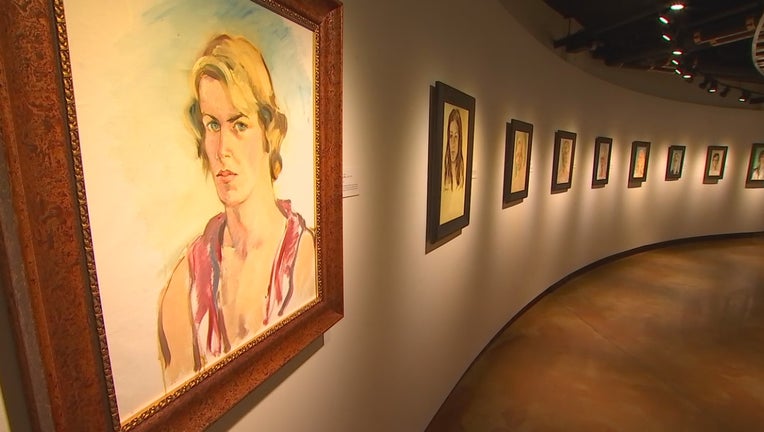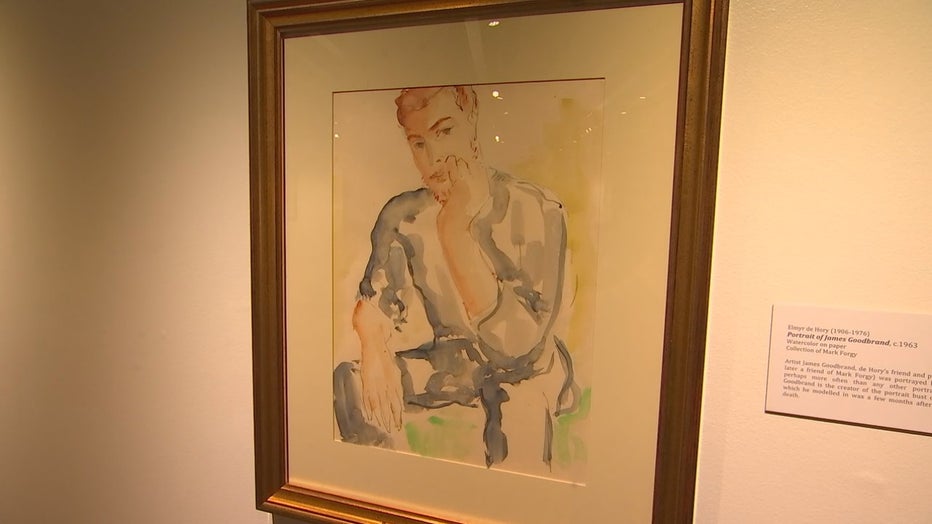The Art Forger: Minnesota art museum showcases painting made by master faker

The gallery in St. Peter holds a number of works by infamous forger Elmyr de Hory. (FOX 9)
ST. PETER, Minn. (FOX 9) - In the 1960s, the art world was sent into a tailspin when fake masterpieces started turning up in prestigious galleries and museums. The forger was a Hungarian artist by the name of Elmyr de Hory and his story may have gone largely untold -- if it hadn't been for a man from Hopkins, Minnesota.
"This is a collection of portraiture done by Elmyr," said Mark Forgy. "It's really a peek inside his secret world."

St. Peter, Minn. art museum showcases painting made by master faker
In the 1960s, the art world was sent into a tailspin when fake masterpieces started turning up in prestigious galleries and museums.
At a small, unassuming museum in St. Peter, you'll find some of the best-kept secrets of the art world.
"So, in this museum, we're seeing the real Elmyr," said Mark Forgy. "Exactly. No pretense here."
The exhibition offers a rare look at original pieces by Elmyr de Hory, a man who made a name for himself in the 50s and 60s as a con artist, knocking off the likes of Picasso and Renoir.
"He wanted to shed the odium on only being known as an art forger," said Forgy. "He wanted to do work in his own style."
Mark Forgy is the beneficiary of all of Elmyr's work, authentic and forged. He curated this ode to the real Elmyr de Hory because he's one of the few people who can.
"You really have two competing narratives here and I want to shed some light on the person that I knew most intimately," said Forgy.
When Forgy was 18, he graduated from Hopkins High School and left for Europe. He landed in Ibiza, Spain and immediately met Elmyr.

(FOX 9)
"I tried to make myself useful to him, and he quickly said, 'I'm looking for an assistant to help around the house,'" he recalled.
A few weeks later, Forgy found out who he was working for.
"And I thought, my gosh, I'm living with an art forger...how cool is that."
That art forger took the young, impressionable kid from Minnesota under his wing.
"He just tried to be my guide and mentor, teach me about art and so many things," said Forgy.
Among them, how to hob-nob with high society. Years had passed since Elmyr's scams had been exposed. Now he was being celebrated as a "bad boy media darling."
"Brigitte Bardot, Ursula Andress," said Forgy, "Orson Welles was certainly one of the foremost giants I met through Elmyr."
And then in 1976, after an eight-year adventure and friendship, 70-year old Elmyr de Hory died by suicide. He left everything to Forgy.
These days, Forgy lives back in Minnesota, in what he jokingly refers to as a temple to Elmyr.
"He wasn't a copyist, that was the secret," Forgy said. "He never copied an existing work but would do something similar."
To this day, no one knows how many of Elmyr's fakes are still in circulation. No one wants to admit they were duped and, incredibly, Elmyr was never charged with a crime.
"According to French police, they had to produce three witnesses who saw him creating the fake works, signing and selling them," Forgy explained. "They couldn't put together a case solid enough."
In a strange twist of fate, Elmyr is the one who's now getting knocked off. For years, Forgy has been trying to thwart a burgeoning cottage industry of fake Elmyrs.
"It's ironic," he said, "but it's low-hanging fruit because people think, 'Well if I fake the fake, is it really a crime?'"
Now that Forgy is 70 years old, the same age as Elmyr when he died, it's given him pause and a renewed determination to straighten out his friend's crooked legacy, once and for all.
"It is a multi-layered story," said Forgy. "So I'm glad now that he can shed that infamy that cloaked him."
The exhibition is at the Hillstrom Museum at Gustafus Adolphus College in St. Peter and Forgy is hoping to give a lecture on Elmyr's work once the coronavirus threat subsides.

